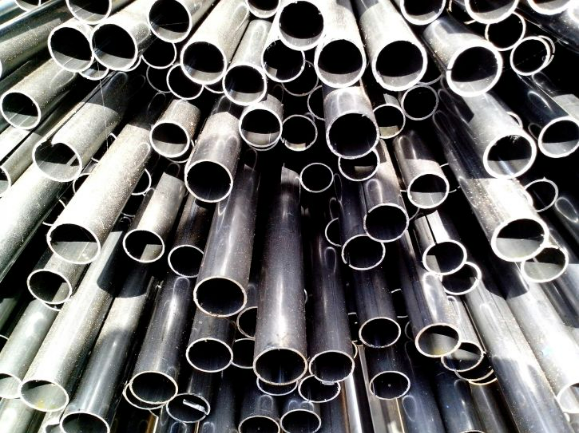Plumbing is a crucial aspect of our daily lives, providing access to clean water for drinking, cooking, and hygiene and safe and efficient waste disposal. A well-designed and properly functioning plumbing system is essential to maintaining a healthy and comfortable home environment.

Professional plumbers in Point Cook say pipes are the backbone of any plumbing system, transporting water and waste to and from our homes. Choosing the right type of pipe for your plumbing needs is critical, as each type has unique features and benefits.
The selection of pipes depends on various factors, including the type of building, the purpose of the plumbing, the location of the pipes, and the budget. This blog will discuss the different types of pipes used in plumbing.
Copper pipes are the most common type of pipes used in plumbing. They are durable, long-lasting, and have excellent corrosion resistance. Copper pipes can withstand high temperatures, making them suitable for hot water systems. They are also easy to install and can be bent to fit around corners without requiring joints.
Copper pipes are available in two types: Type L and Type M. Type L copper pipes are thicker and stronger and are ideal for underground installations used for blocked drains in Melbourne. In contrast, Type M copper pipes are thinner and are suitable for above-ground installations.
One of the main drawbacks of copper pipes is their cost, as they are more expensive than other types of pipes. They are also susceptible to theft, as they are valuable and easy to remove.
Read Also:
PVC (polyvinyl chloride) pipes are plastic and popular for their affordability and versatility. They are lightweight and easy to handle, making them suitable for DIY plumbing projects. PVC pipes are also corrosion-resistant and can withstand high temperatures and pressure.
PVC pipes are available in different sizes and color-coded to indicate their intended use. For example, white PVC pipes are used for potable water, while grey PVC pipes are used for drain and waste systems.
One of the main disadvantages of PVC pipes is their vulnerability to UV rays, which can cause them to crack and break down over time. PVC pipes also have a lower melting point than others, making them unsuitable for hot water systems.
PEX (cross-linked polyethylene) pipes are flexible plastic pipes that are gaining popularity in plumbing. They are durable, corrosion-resistant, and can withstand high temperatures and pressure, making them useful for hot water repairs. PEX pipes are also easy to install, as they can be bent to fit around corners without the need for joints.
PEX pipes come in different colors, each indicating its intended use. For example, red PEX pipes are used for hot water, while blue PEX pipes are used for cold water. One of the main advantages of PEX pipes is their flexibility, which makes them ideal for retrofitting and remodeling projects. They are also more affordable than copper pipes and can be installed using fewer fittings, reducing the risk of leaks.
However, PEX pipes are unsuitable for outdoor installations, as UV rays can damage them. They are also vulnerable to chemicals and require special fittings and tools for installation.
Galvanized steel pipes are made of steel coated with a layer of zinc to prevent corrosion. They are durable and can withstand high temperatures and pressure. Galvanized steel pipes are also fire-resistant and have a long lifespan.
Galvanized steel pipes are commonly used for water supply systems, but they are becoming less popular due to their weight, high cost, and tendency to rust over time.
One of the main drawbacks of galvanized steel pipes is their tendency to rust from the inside out, which can lead to reduced water pressure and the need for frequent repairs. They are also more difficult to install than other pipes, as they require threading and fittings.
Cast iron pipes are made from strong and durable cast iron. They have been used for over a century in various applications, including drainage, wastewater, and venting systems. Cast iron pipes are known for their high resistance to corrosion, long lifespan, and excellent soundproofing properties.
The manufacturing process of cast iron pipes involves pouring molten iron into molds to create solid, cylindrical pipes. The pipes can be produced in a range of diameters and thicknesses to meet specific application requirements.
Cast iron pipes are commonly used in buildings, homes, and municipal infrastructure projects and are often preferred over other types for their durability and longevity.
In conclusion, selecting pipes for plumbing is critical to any plumbing project like gutter replacement. Choosing the right type of pipe can ensure your plumbing system’s longevity and efficient functioning.
Copper pipes are the most common type used in plumbing due to their durability, corrosion resistance, and ability to withstand high temperatures. PVC pipes are affordable, lightweight, and easy to install, making them popular for DIY plumbing projects.
PEX pipes are flexible plastic pipes that are gaining popularity due to their durability and ease of installation. Galvanized steel and cast iron pipes have unique features and benefits.
When selecting pipes for your plumbing needs, consider factors such as the purpose of the plumbing, the location of the pipes, and the budget. Regularly maintaining and repairing your plumbing system is essential to prevent leaks and ensure proper functioning.
In summary, understanding the different types of pipes used in plumbing can help you decide which type is best for your home. Get in touch with our experts at NLK Plumbing for the proper installation, maintenance, and repair of your plumbing system.